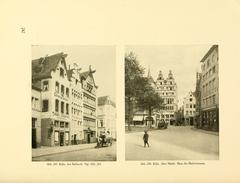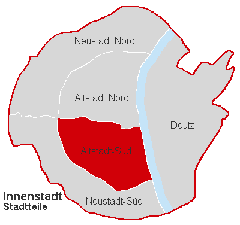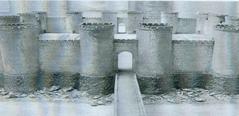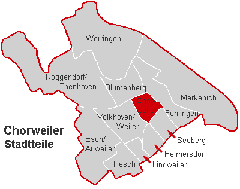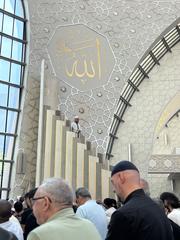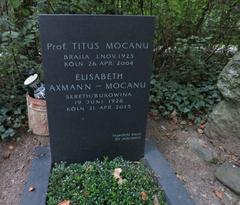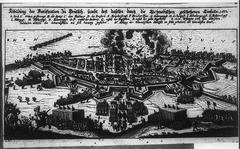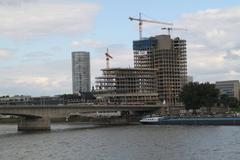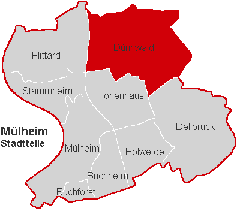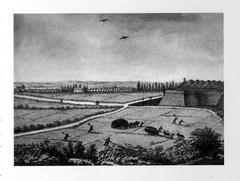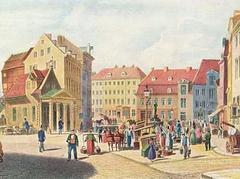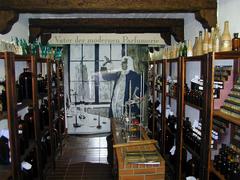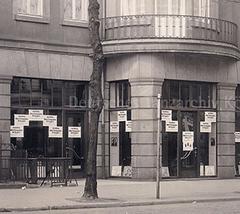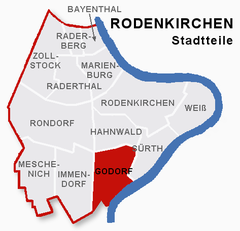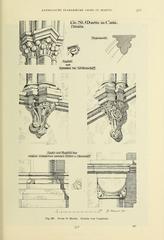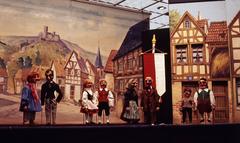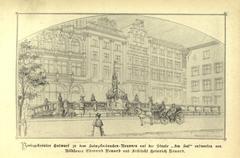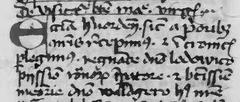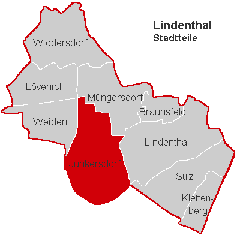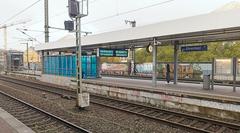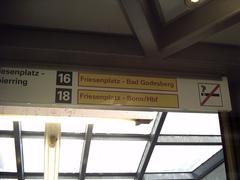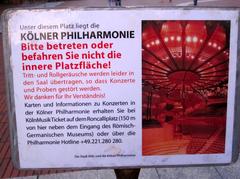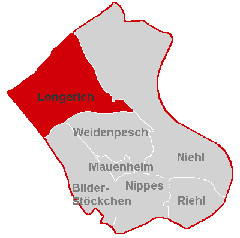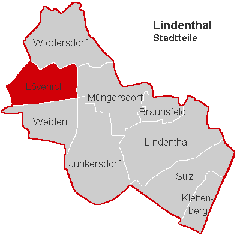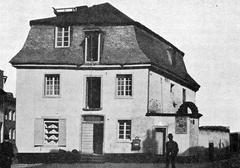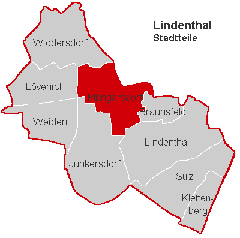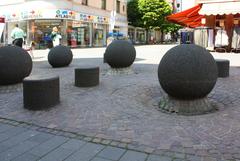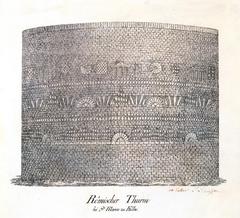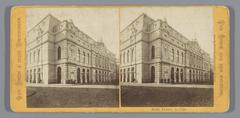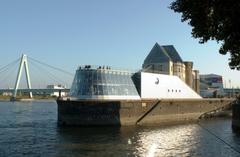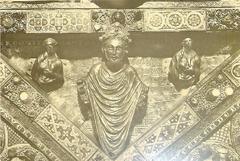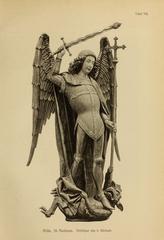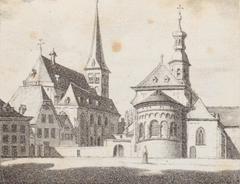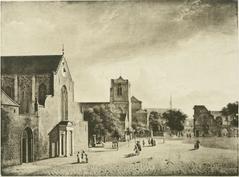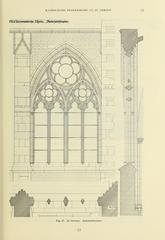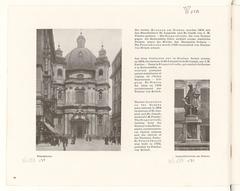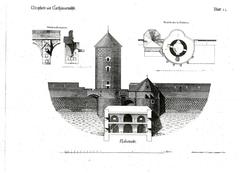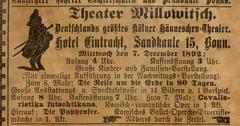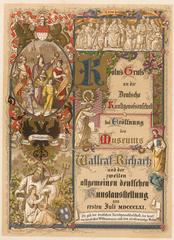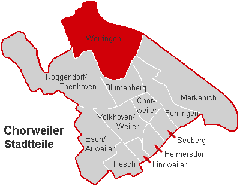Visiting Am Hornpottweg: A Complete Guide to Cologne’s Historical Site
Date: 24/07/2024
Introduction
Am Hornpottweg, nestled in the historic and vibrant city of Cologne, Germany, is a destination that offers a rich tapestry of history, culture, and natural beauty. This area is not just a place of serene landscapes and diverse wildlife but also a site of immense historical significance dating back to Roman times. Visitors to Am Hornpottweg can explore remnants from Cologne’s early days as ‘Colonia Claudia Ara Agrippinensium,’ a prominent Roman settlement founded in 50 AD (Livius). The area evolved through the medieval period, becoming a bustling merchant city with landmarks like the Cologne Cathedral, a UNESCO World Heritage site, which began construction in 1248 and was completed in 1880 (UNESCO World Heritage Centre). Despite suffering extensive damage during World War II, Cologne’s commitment to restoration has preserved its architectural heritage, including sites around Am Hornpottweg. Today, this area is a blend of ancient ruins, medieval architecture, and modern developments, reflecting Cologne’s resilience and historical richness. Whether you’re a history buff, a nature enthusiast, or a casual traveler, Am Hornpottweg offers an immersive experience into Cologne’s past and present.
Table of Contents
- Introduction
- History and Significance
- Visitor Information
- Cultural and Historical Attractions
- Visitor Tips
- Explore the Natural Beauty and Wildlife
- FAQ
- Conclusion
History and Significance
Roman Origins and Early Development
Am Hornpottweg, situated in Cologne, Germany, is steeped in a rich history that dates back to the Roman era. Cologne, originally known as ‘Colonia Claudia Ara Agrippinensium,’ was founded in 50 AD and quickly became a significant Roman settlement (Livius). The area around Am Hornpottweg was part of this expansive Roman city, serving as a crucial administrative and military hub in the Roman Empire.
Medieval Significance
During the medieval period, Cologne evolved into a prominent merchant city due to its strategic location along the Rhine River. This period saw the construction of many significant structures, including the Cologne Cathedral, which began in 1248 and was completed in 1880 (UNESCO World Heritage Centre). The medieval architecture around Am Hornpottweg reflects this era’s prosperity and the city’s importance as a trade center.
Architectural Heritage
Am Hornpottweg is surrounded by numerous historical buildings that showcase Cologne’s architectural evolution. The Cologne City Hall, with its origins dating back over 900 years, is a prime example of the city’s medieval architecture (Germany Travel Blog). The hall’s design and historical significance make it a must-visit for those interested in Cologne’s political and cultural history.
World War II Impact
Cologne, including the area around Am Hornpottweg, suffered extensive damage during World War II. The city was heavily bombed, leading to the destruction of many historical buildings. However, significant efforts were made to restore these structures post-war. For instance, Groß St. Martin, one of Cologne’s 12 Romanesque churches, underwent restoration from 1948 to 1985 after suffering significant war damage (Germany Travel Blog).
Visitor Information
Modern-Day Significance
Today, Am Hornpottweg stands as a testament to Cologne’s resilience and historical richness. The area is a blend of ancient ruins, medieval architecture, and modern developments, offering a unique glimpse into the city’s past and present. The Roman-Germanic Museum, located nearby, houses artifacts from Cologne’s Roman era, including the impressive Dionysus mosaic discovered in 1941 (Germany Travel Blog).
Visiting Hours and Tickets
Most historical sites around Am Hornpottweg, such as the Cologne Cathedral and the Roman-Germanic Museum, are open from 10 AM to 5 PM, Tuesday through Sunday. Ticket prices vary, with the Cologne Cathedral offering free entry and the Roman-Germanic Museum charging approximately €6 for adults. It is advisable to check official websites for the most up-to-date visiting hours and ticket prices.
Cultural and Historical Attractions
Cologne Cathedral
The Cologne Cathedral, a UNESCO World Heritage site, is one of the most visited landmarks in Germany. It houses the reliquary of the Three Kings and features invaluable art, including stained glass windows from the 1500s and the 10th-century Gero-Kreuz crucifix (The Crazy Tourist). The cathedral’s Gothic architecture and historical significance make it a central attraction for visitors to Am Hornpottweg.
Praetorium Cologne
The Praetorium, an underground archaeological site, offers a rare glimpse into Cologne’s Roman history. Once the seat of the Imperial Governor, the well-preserved ruins include ancient walls, floor mosaics, and pillars with inscriptions dating back thousands of years (Germany Travel Blog). This site is a must-visit for archaeology enthusiasts.
Altstadt (Old Town)
The Altstadt, or Old Town, is the historical center of Cologne and home to many Gothic churches, including the Cologne Cathedral. The area also features the Archeological Zone, the Old St. Alban Memorial, and the Stapelhaus, all of which are significant historical sites (Germany Travel Blog).
Visitor Tips
Best Time to Visit
The best time to visit Am Hornpottweg and Cologne is during the spring and summer months when the weather is pleasant, and the city’s gardens are in full bloom. The Flora and Botanical Garden, open year-round, is particularly beautiful during these seasons (The World Was Here First).
Transportation
Cologne is a very walkable city, and most of the main attractions around Am Hornpottweg are centrally located. For those planning to use public transit, the 24 or 48-hour KolnCard offers free tickets on public transport throughout the city, including to and from the airport (The World Was Here First).
Local Cuisine
Visitors should not miss trying the local brew, Kölsch, and the traditional dish Halve Hahn, which consists of rye bread and gouda cheese. These can be enjoyed at one of Cologne’s many traditional Kneipen (pubs) (The Crazy Tourist).
Explore the Natural Beauty and Wildlife
Overview of Am Hornpottweg
Am Hornpottweg is a serene and picturesque area located in the southern part of Cologne, Germany. Renowned for its lush greenery, diverse wildlife, and tranquil natural beauty, it is a perfect destination for nature enthusiasts and wildlife lovers. The area is part of the larger Königsforst, a vast forest that offers a variety of outdoor activities, including hiking, bird watching, and nature photography.
Flora and Fauna
Am Hornpottweg is home to a rich variety of plant and animal species. The forested area is dominated by deciduous trees such as oak, beech, and maple, which provide a dense canopy and a vibrant display of colors, especially during the autumn season. The undergrowth is equally diverse, with shrubs, ferns, and wildflowers adding to the area’s botanical richness.
The fauna in Am Hornpottweg is equally impressive. Visitors can expect to encounter a variety of bird species, including woodpeckers, owls, and songbirds. The area is also home to mammals such as deer, foxes, and wild boars. The presence of these animals indicates a healthy and balanced ecosystem, making it a haven for wildlife enthusiasts.
Hiking Trails and Scenic Routes
Am Hornpottweg offers several well-marked hiking trails that cater to different fitness levels and interests. One of the most popular trails is the Dellbrücker Heide – Höhenfelder See loop, which is approximately 21.4 miles long and takes about 10 hours to complete. This trail offers a mix of forested paths and open meadows, providing hikers with stunning views and a peaceful atmosphere.
Another notable trail is the Königsforst, which features a variety of routes suitable for both beginners and experienced hikers. The forest’s extensive network of trails allows visitors to explore different parts of the area, each offering unique landscapes and natural features. The Königsforst is particularly popular for its accessibility and the diversity of its trails.
Bird Watching and Wildlife Observation
Am Hornpottweg is a prime location for bird watching and wildlife observation. The area’s diverse habitats, including forests, meadows, and wetlands, attract a wide range of bird species. Bird watchers can spot species such as the Eurasian jay, the great spotted woodpecker, and various types of warblers. The best time for bird watching is during the early morning or late afternoon when birds are most active.
For those interested in observing larger wildlife, the forested areas provide ample opportunities to see deer, foxes, and wild boars in their natural habitat. Visitors are encouraged to bring binoculars and cameras to capture these moments. It’s important to maintain a respectful distance from the animals to avoid disturbing them and to ensure a safe and enjoyable experience for both the wildlife and the observers.
Conservation Efforts and Environmental Significance
Am Hornpottweg is not only a place of natural beauty but also an important area for conservation efforts. The local authorities and environmental organizations work together to preserve the area’s biodiversity and natural habitats. These efforts include maintaining the trails, monitoring wildlife populations, and conducting educational programs to raise awareness about the importance of conservation.
The area’s environmental significance is highlighted by its role in supporting a variety of ecosystems and providing a refuge for many species. The conservation efforts help to ensure that Am Hornpottweg remains a thriving natural area for future generations to enjoy.
Visitor Information
Visiting Hours and Accessibility
Am Hornpottweg is open to visitors year-round. However, the best times to visit are during the spring and autumn seasons when the weather is mild, and the landscapes are vibrant with colors. Early mornings and late afternoons are ideal for wildlife observation. The area is accessible by public transportation, and there is ample parking available for those who prefer to drive.
Tickets and Tours
There is no entrance fee to visit Am Hornpottweg. However, guided tours are available for those who wish to learn more about the area’s natural history and conservation efforts. These tours can be booked through local tour operators or the official Königsforst website.
Visitor Tips and Guidelines
To make the most of a visit to Am Hornpottweg, it’s important to follow some basic guidelines and tips:
- Pack Appropriately: Bring essential gear such as water, snacks, and appropriate clothing for the weather. Comfortable hiking shoes are a must for navigating the trails.
- Respect Nature: Stay on designated trails to protect the delicate ecosystems and avoid disturbing wildlife. Do not litter and take all trash with you when you leave.
- Safety First: Inform someone about your hiking plans and expected return time. Carry a map and a fully charged mobile phone for emergencies.
- Photography: Bring a camera to capture the stunning landscapes and diverse wildlife. Be patient and quiet to increase your chances of spotting animals.
- Guided Tours: Consider joining a guided tour to learn more about the area’s natural history and conservation efforts. Guided tours can provide valuable insights and enhance the overall experience.
Nearby Attractions
While Am Hornpottweg is a destination in itself, visitors can also explore nearby attractions to enrich their experience. The Eifel National Park, located a short drive from Cologne, offers additional hiking trails and opportunities to witness rich biodiversity and abundant wildlife. The park’s scenic trails cater to different fitness levels, ensuring there’s something for everyone to enjoy.
Another nearby attraction is the Bergisches Land, a picturesque region known for its rolling hills, lush forests, and tranquil valleys. The area offers a variety of hiking trails, including the Natursteig Sieg, which stretches 200 kilometers from Siegen to Siegburg and provides breathtaking views of the surrounding landscape.
FAQ
What are the visiting hours for Am Hornpottweg?
Am Hornpottweg is open to visitors year-round. The best times to visit are during the spring and autumn seasons.
Are there any entrance fees?
There is no entrance fee to visit Am Hornpottweg. Guided tours are available at an additional cost.
Is Am Hornpottweg accessible by public transportation?
Yes, Am Hornpottweg is accessible by public transportation. There is also ample parking available for those who prefer to drive.
What should I bring for a visit?
Visitors should pack water, snacks, appropriate clothing for the weather, and comfortable hiking shoes. A map and a fully charged mobile phone are also recommended for safety.
Can I join a guided tour?
Yes, guided tours are available and can be booked through local tour operators or the official Königsforst website.
Conclusion
Am Hornpottweg in Cologne, Germany, stands as a testament to the city’s rich historical legacy and natural beauty. From its Roman origins to its medieval architectural marvels and the resilience showcased in post-World War II restorations, this area encapsulates the essence of Cologne’s enduring spirit. Visitors can explore a blend of ancient and modern attractions, including the iconic Cologne Cathedral and the Roman-Germanic Museum, which houses artifacts from Cologne’s Roman era (Germany Travel Blog). For nature lovers, the lush greenery and diverse wildlife in the surrounding Königsforst forest offer a tranquil retreat. Whether you’re hiking through scenic trails, bird watching, or simply soaking in the historical ambiance, Am Hornpottweg provides a multifaceted experience that caters to a wide range of interests. By following visitor tips and respecting the natural environment, you can ensure a memorable and enriching visit to this historical gem. Stay updated on the latest news and travel tips by following us on social media and checking out related posts on our blog.
